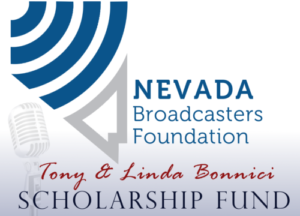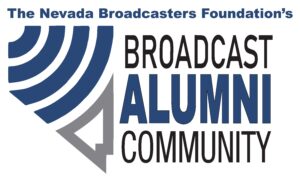Earlier this year, we posted updated guidelines about engaging in or accepting advertising or promotions that directly or indirectly allude to the Super Bowl without a license from the NFL or the Final Four Tournament without a license from the NCAA. See here, here and here. Now, it is time to think about these issues in the context of the 2024 Paris Olympics!
…
This Week in Regulation for Broadcasters: July 15, 2024 to July 19, 2024
Here are some of the regulatory developments of significance to broadcasters from this past week, with links to where you can go to find more information as to how these actions may affect your operations.
- The FCC’s Media Bureau announced that August 15 is the effective date of the FCC’s expanded foreign government sponsorship identification rules.
…
August 15 Is the Effective Date of Requirements for Foreign Government Certifications for Political Issue Advertising and Paid PSAs
The FCC this week issued a Public Notice announcing the effective date of certain portions of the FCC Order released in June adopting changes to its requirements that broadcasters obtain certifications from buyers of program time on their stations that the sponsors are not foreign governments or agents of those governments. As we wrote when the Order was released,
…
This Week in Regulation for Broadcasters: July 1, 2024 to July 5, 2024
Here are some of the regulatory developments of significance to broadcasters from this past week, with links to where you can go to find more information as to how these actions may affect your operations.
- The National Religious Broadcasters, American Family Association, and the Texas Association of Broadcasters jointly requested that the FCC stay the Form 395-B reporting requirement while the U.S.
…
This Week in Regulation for Broadcasters: July 8, 2024 to July 12, 2024
Here are some of the regulatory developments of significance to broadcasters from this past week, with links to where you can go to find more information as to how these actions may affect your operations.
- The FCC’s weekly list of items on circulation (those orders or rulemaking proposals that have been drafted and are currently circulating among the Commissioners for review and vote) removed a Notice of Proposed Rulemaking on AI-generated content in political advertising.
…
Supreme Court Rejects the Chevron Doctrine – What Does it Mean for Broadcasters Regulated By the FCC?
Last week, the U.S. Supreme Court overturned the longstanding Chevron doctrine, which required courts to defer to expert regulatory agencies, like the FCC, when interpreting ambiguous statutes, unless the agency acted unreasonably. Since the decision, we have seen all sorts of TV pundits predicting the end of “the administrative state” (presumably meaning the end of the many rules passed by administrative agencies like the FCC).
…
This Week in Regulation for Broadcasters: June 24, 2024 to June 28, 2024
Here are some of the regulatory developments of significance to broadcasters from this past week, with links to where you can go to find more information as to how these actions may affect your operations.
- The U.S. Supreme Court overturned the longstanding Chevron doctrine, which required Courts to defer to expert regulatory agencies, like the FCC,
…
July Regulatory Dates for Broadcasters – Quarterly Issues/Programs Lists, Comment Deadlines in Multiple Proceedings, Political Windows, and More
The lazy days of summer continue to provide little respite from the regulatory actions of importance to broadcasters. This month brings quarterly requirements, including most importantly, the obligation to upload Quarterly Issues Programs Lists to a station’s online public file, and a number of comment deadlines in important FCC proceedings, as well as the opening of political windows in this major election year.
…
This Week in Regulation for Broadcasters: June 17, 2024 to June 21, 2024
Here are some of the regulatory developments of significance to broadcasters from this past week, with links to where you can go to find more information as to how these actions may affect your operations.
- The FCC’s Media Bureau asked for comments on a petition for rulemaking proposing the creation of a new class of FM stations – Class A10.
…
FCC Releases Decision on Broadcaster’s Obligations to Identify Foreign Government Sponsored Programming – There is Some Good News, and Some Bad News Affecting Issue Ads
Last week, the FCC released its long-expected decision on foreign government sponsored programming. As you will recall, in 2022, the FCC adopted rules that required enhanced sponsorship identifications when program time bought (or, in the FCC’s words, “leased”) on broadcast stations was sponsored by a foreign government or an agent of a foreign government. In addition, it required broadcasters to verify whether program buyers were agents of foreign governments,
…
FCC Admonishes Three TV Stations for Not Having Clauses in Sales Agreements Requiring Non- discrimination in the Purchase of Advertising Time – A Reminder to Broadcasters
As we wrote in Sunday’s weekly summary of broadcast actions, last week was a very active one at the FCC. The FCC released the texts of rulemaking proposals on annual regulatory fees and on new regulatory proposals for LPTV and TV translator stations. The Commission also released orders reinstating rules prohibiting FM stations serving the same area from duplicating programming and rules imposing new verification requirements on broadcasters to assure that program time (and issue ads) that they sell are not purchased by representatives of foreign governments without enhanced public disclosures.
…
This Week in Regulation for Broadcasters: June 10, 2024 to June 14, 2024
Here are some of the regulatory developments of significance to broadcasters from this past week, with links to where you can go to find more information as to how these actions may affect your operations.
- The FCC released a Second Notice of Proposed Rulemaking asking for comments on the 2024 FCC annual regulatory fees, which will be paid in September by broadcasters and other FCC-regulated entities.
…


